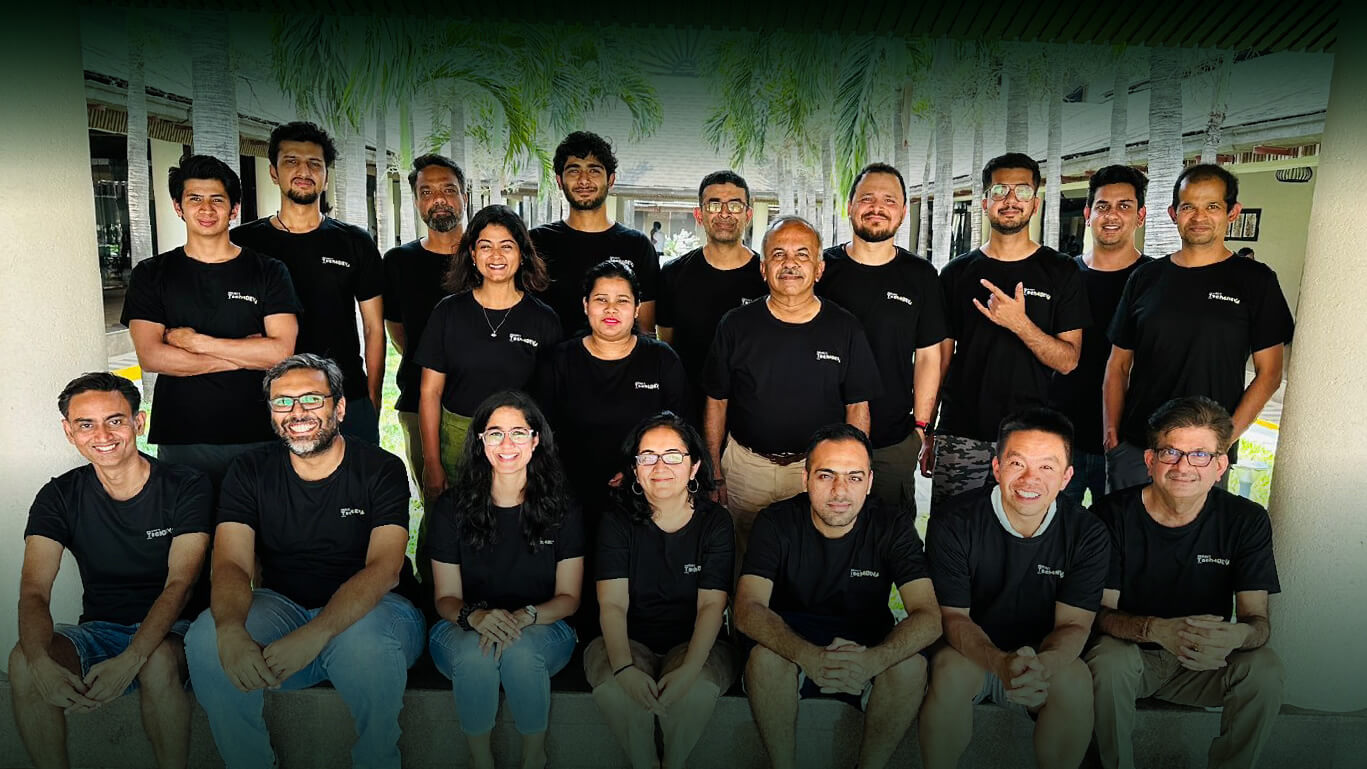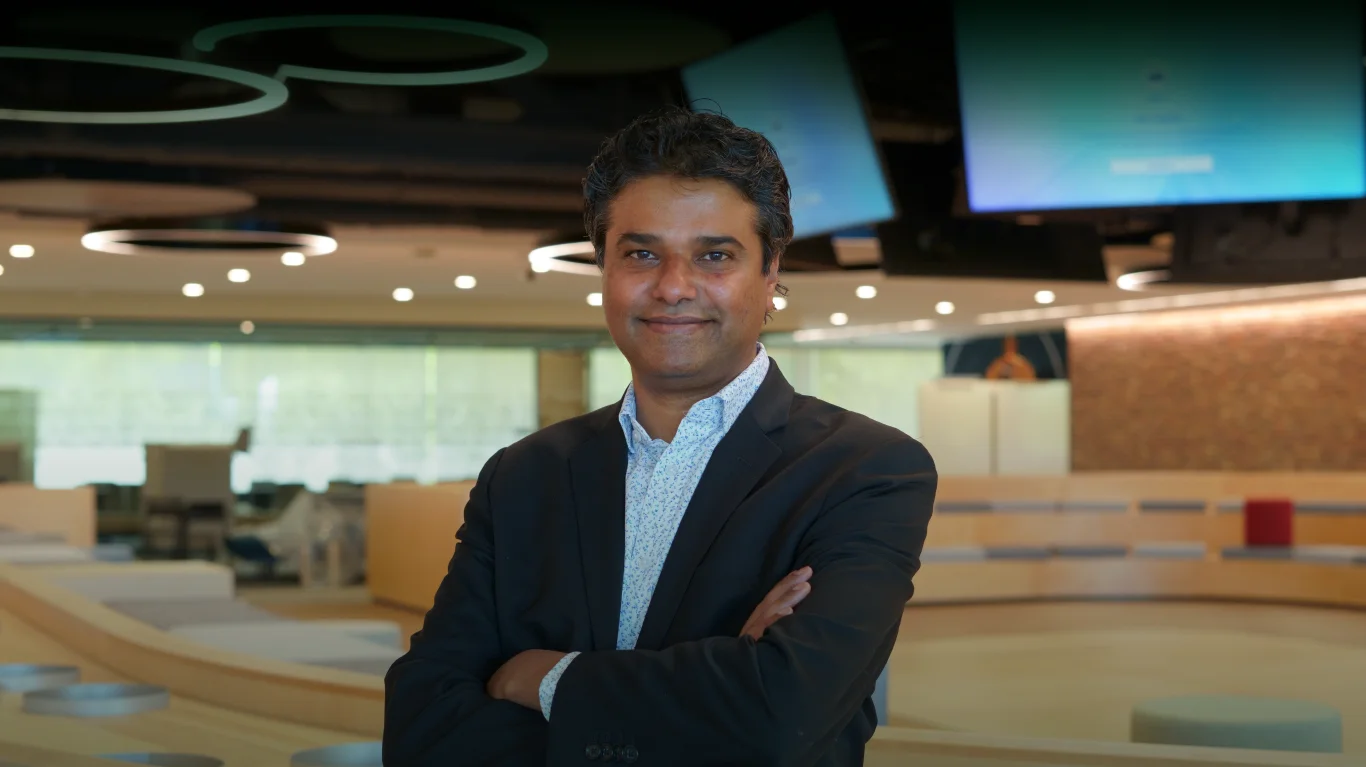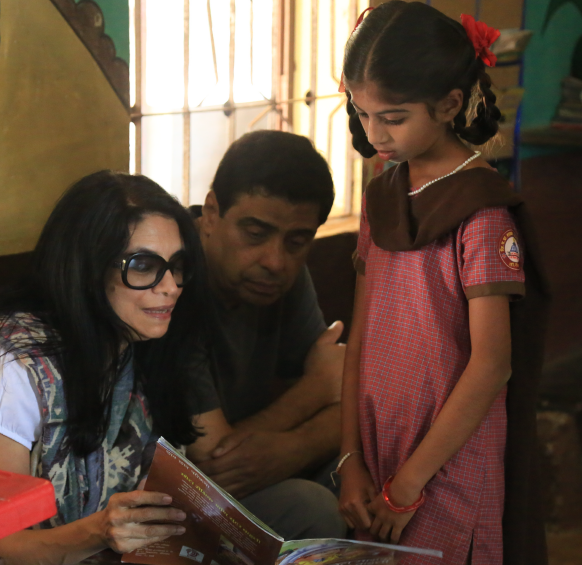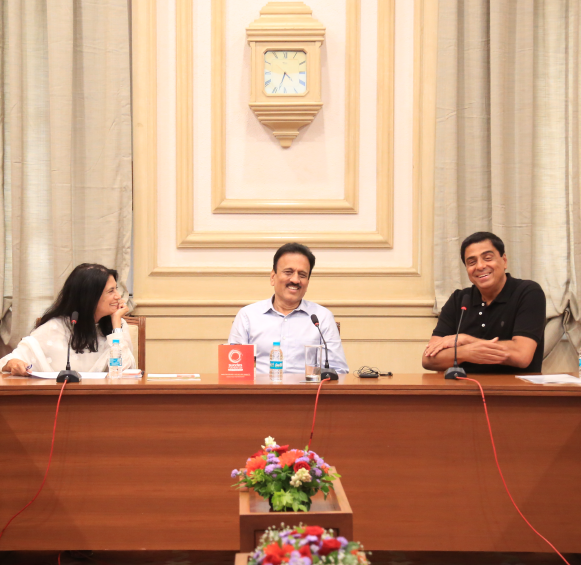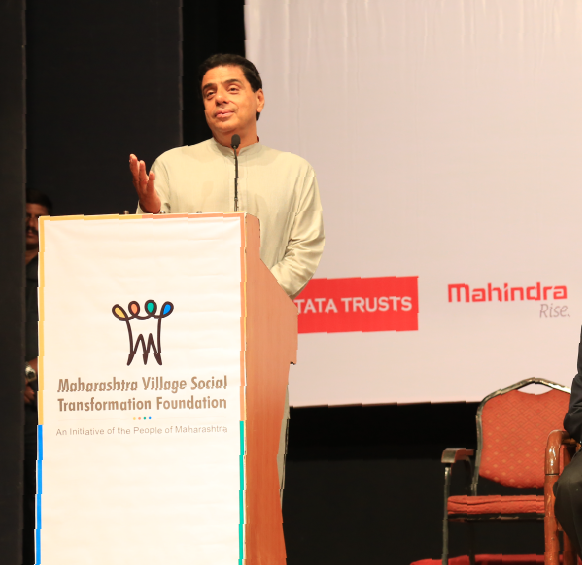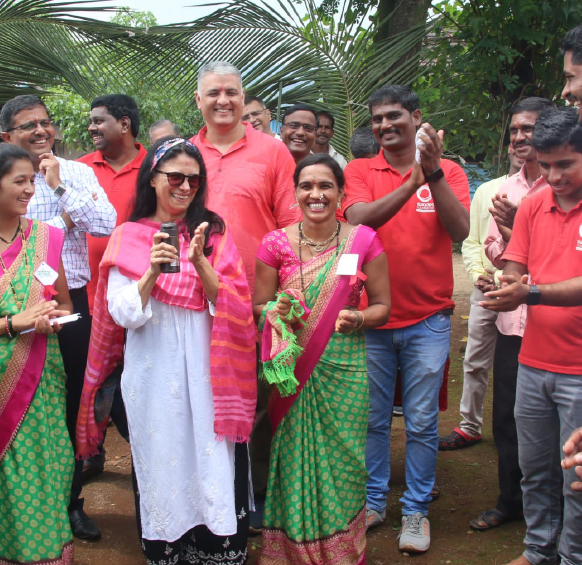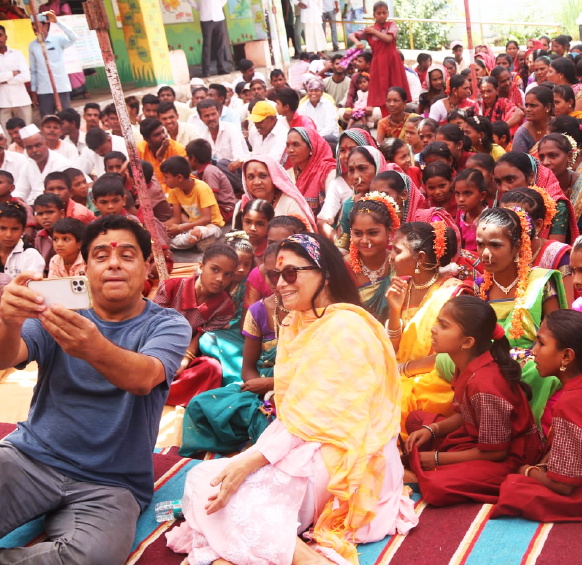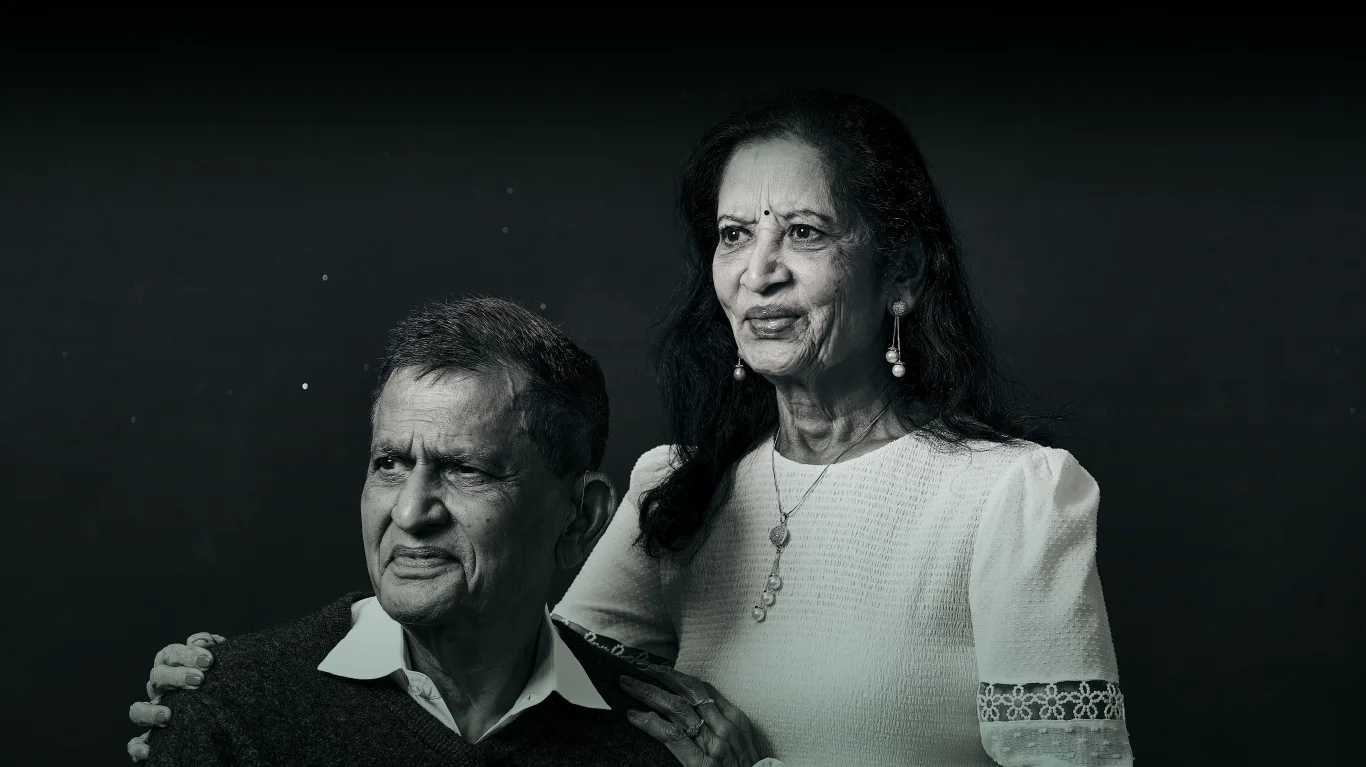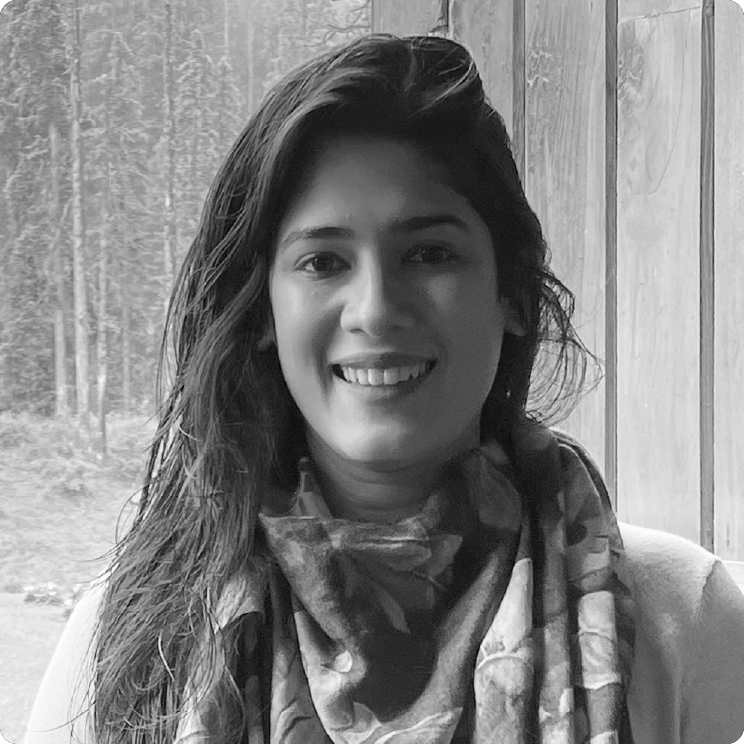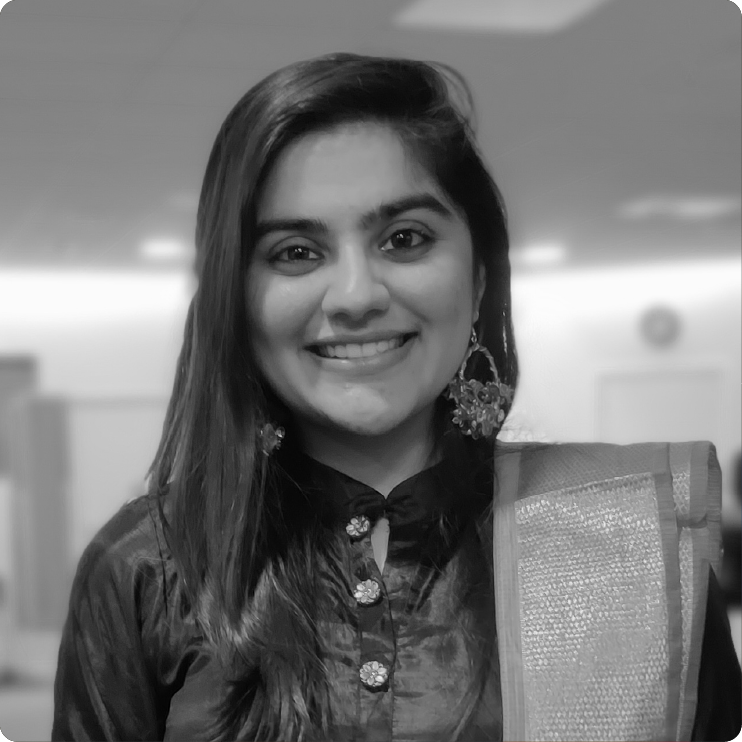Empowering Rural India: Lifting a Million People Out of Poverty Every Five Years
In 2012, Ronnie Screwvala turned to his wife, Zarina, with an audacious idea, “Why don’t we work to lift a million people out of poverty?” And Zarina replied, “Why not try?” This may sound over ambitious until one realizes that in just 10 years, their philanthropic efforts have impacted 2,700 hamlets across Raigad and Nashik districts of Maharashtra impacting over 7,50,000 people from 1,60,000 households.
"It was such a crazy idea," recalls Zarina, reflecting on that pivotal moment. "But it was precisely the audacity and awareness of the challenges ahead that compelled us to take it up. We were not afraid to fail, we were eager to learn a lot, and thus, Swades Foundation was born."
Starting Slow, Building Intentionally
Swades Foundation – Zarina and Ronnie Screwvala’s nonprofit organization and philanthropic venture – was born of the couple’s determination to commit more of themselves to philanthropy. Following the divestment of their UTV Motion Pictures shares to Disney in 2012, they set their sights on an audacious goal: to uplift a million people out of poverty, a vision some might dismiss as a mere pipe dream.
With newfound financial means and a keen desire to actively participate in the process, the decision to invest in their giving was natural. They embraced the belief that personal commitment, focus, and rigor were paramount in effective philanthropy. Ronnie emphasized, “While money can catalyze change and be an enabler, it is the combination of time, dedication, and personal engagement that creates lasting impact.” This guiding philosophy led them to make a pivotal decision – to establish and operate their own nonprofit rather than solely rely on traditional grant-making.
However, Zarina and Ronnie’s journey in philanthropy had begun much earlier, with the establishment of a day-care facility for adults with mental disabilities and the founding of SHARE (Society to Heal Aid Restore Educate), a nonprofit dedicated to water conservation in rural Raigad during the 1990s. “Philanthropy started very early for us, even before monetary contributions were feasible,” Ronnie noted.
As they progressed and transformed SHARE into Swades Foundation, they examined what sort of organization they wanted to build and the kind of development model they wanted to employ. And to do so, the couple embarked on a year-long learning journey within the social sector. This expedition included a visit to Sir Fazle Hasan Abed, the founder of BRAC in Bangladesh, where they studied his holistic model of community development. Here, they discovered an integrated approach to poverty alleviation that resonated perfectly with their vision for Swades Foundation.
A Holistic, Community Centric, Collaborative Approach to Philanthropy
Today, Swades Foundation stands resolute in pursuit of its audacious mission—to transform one million rural lives every five to seven years. To achieve their goal, the organization has built its model on four pillars, each representing a crucial aspect of their approach.
The first pillar is a comprehensive 360° intervention inside-out model of development, with a multiplier effect. This holistic approach covers all aspects of individual and community development through four key verticals – Health & Nutrition, Education, Water & Sanitation and Economic Development.
Second is their focus on geography – the Foundation strategically operates by rolling out its complex, deep intervention model within a carefully selected geography. In the initial phases this helped tremendously to test their model, allowing the Foundation to pivot with each new geography. Today, it operates in 11 blocks of Nashik and Raigad.
Third is their unwavering focus on being community-centric, ensuring that their impact reaches the most vulnerable. Each inroad into a community is made with great deliberation, with numerous factors weighed. The Foundation studies which block and district they want to enter, considering the density of population, migration, politics, sensitivities, and the presence of other nonprofits, and importantly understanding the village's most crucial needs. But for Zarina and the team, what is most important is the communities’ demonstrated willingness to embrace the Swades model. They need to be willing to offer their time and energy towards solving their own problems. Zarina shared, “This is what we call the ‘Swa Se Bane Des’ attitude. This is what we look for initially in maybe two or three potential community leaders and then help create and foster a sense of ownership and empowerment in the village.”
An instance of community-led change was seen in Patilpada, the first tribal hamlet in Surgana, Nashik, where Swades Foundation undertook the establishment of individual toilets. Initially, the families of Patilpada expressed hesitancy in contributing INR 500 towards these toilets. To inspire community members, the approach taken was to encourage only capable families to make contributions, assuring them of a refund from the corpus, in case the project failed. Today, more than 50 families in Patilpada have household toilets and the hamlet is on the path of being open defecation free.
Embracing the power of collaboration forms the fourth pillar of Swades Foundation's model. “We believe strongly in collaboration, we try not to reinvent anything and look long and hard for suitable partners for all our programs,” Zarina said, of the wide network of partnerships Swades Foundation has fostered with government, nonprofits, corporates, and local communities to galvanise grassroots change.
However, an endeavour as ambitious as theirs is not without its challenges and learning opportunities.
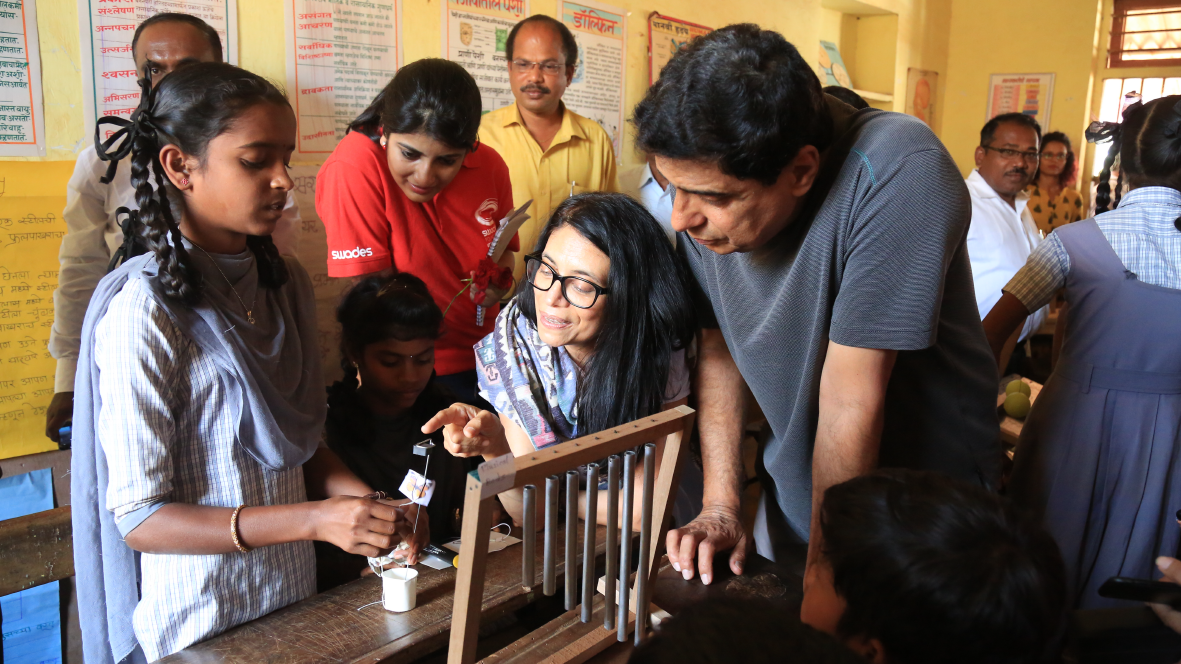
A student presenting her science project to Ronnie and Zarina Screwvala
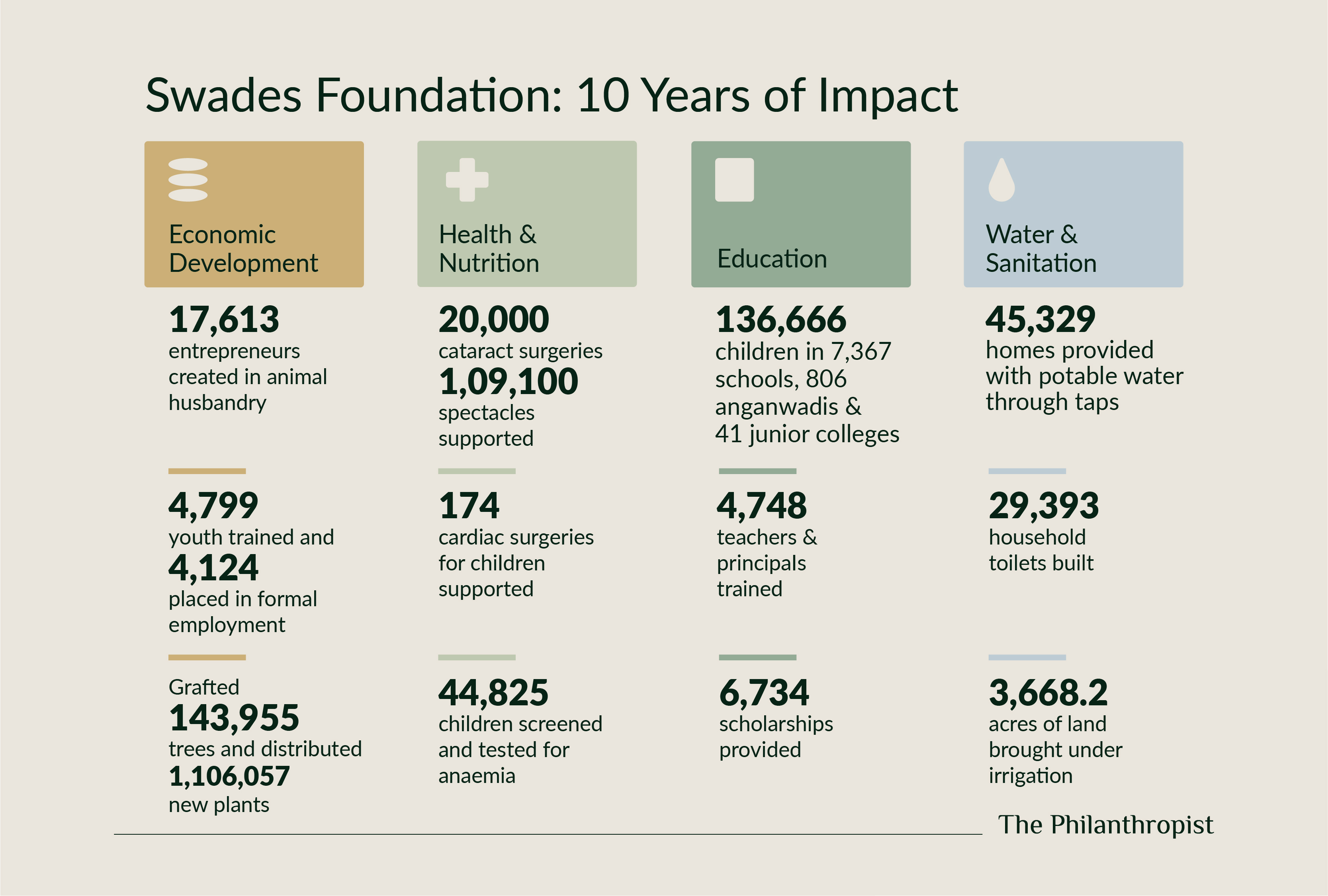
How Swades Foundation is empowering rural India
Fostering a Learning Mindset and Embracing Failure
In the beginning, Swades Foundation’s conception of community-building was unilateral, a top-down approach that decided what villagers needed and how to give it to them. Zarina shared, “Our most important learning was the switch from a charity approach to an empowerment approach. Initially, we came up with a goal-oriented approach. A push approach – ‘take a cow; take a goat; take this water; take this toilet.’’ But we realized this sense of empowerment that we were committed to was not being fostered and communities were becoming dependent.”
Acknowledging this shortcoming demanded immense courage, as Zarina highlighted. Instead of dismissing isolated incidents, Swades Foundation embraced the importance of recognizing and addressing fault-lines in their approach. She explained, “For us this was our biggest challenge – How to create truly empowered communities? We took our entire team on board, planned carefully for almost 8 months and created a well thought through solution – The Village Development Committees (VDCs) – which we tested in a new geographic block. Today, it’s our greatest strength.”
Taking stock of the situation, Swades Foundation transformed its development model, giving rise to the VDCs, its flagship construct. Each VDC consists of 50 per cent women and adequate representation from the youth and elderly to identify the needs of the village and mobilise action to meet them.
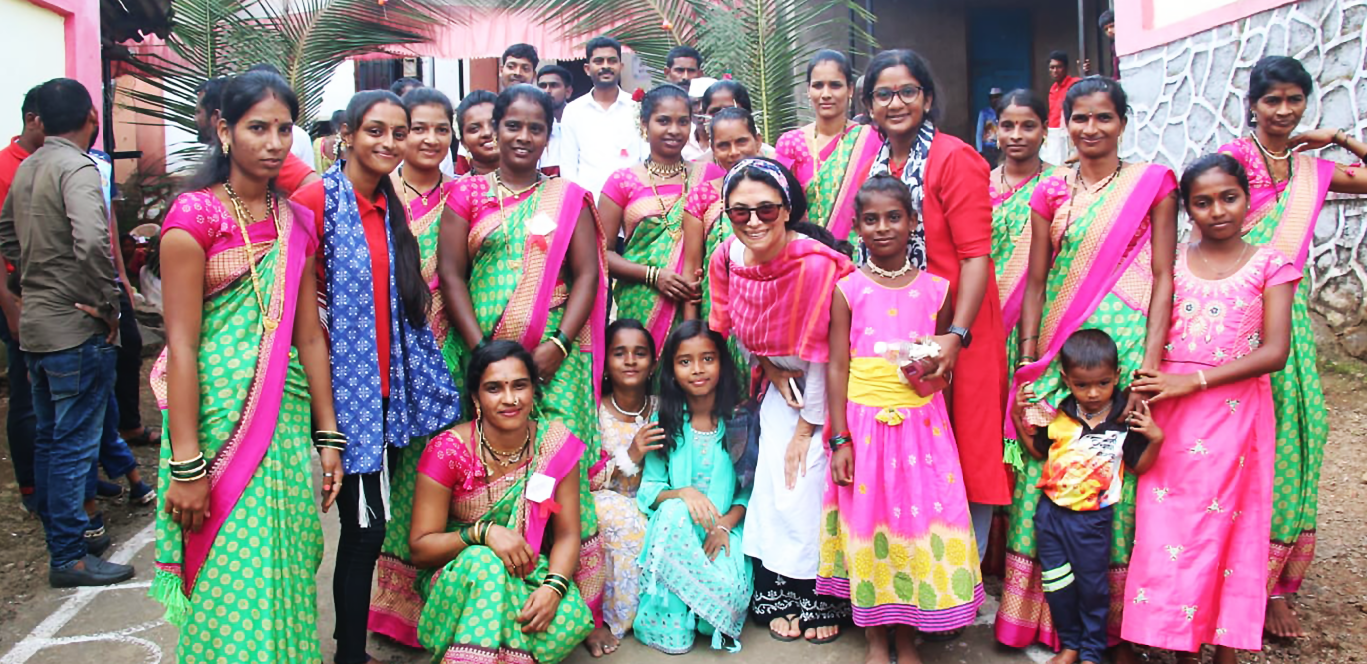
Zarina with community members supported by Swades Foundation
Vision Towards India@100
To commemorate India’s 75th year of independence, Swades Foundation along with the communities it supports celebrated 75 Dream Villages and are moving towards 750. As India approaches 100 years of independence, Ronnie and Zarina reflect on their audacious pledge to lift a million people out of poverty. The revised manifesto would say they want to create a model of development that can lift a million people from poverty, though they now acknowledge it may take longer than the initially envisioned five years—perhaps seven or even ten. Zarina humorously remarked, "When we began, we were young and audacious; now we're older and wiser...but still young in our own way!"Looking ahead, Zarina and Ronnie hope for philanthropy to grow both in depth and width. Zarina emphasized the need for smarter, more collaborative giving, alongside a growing number of individuals embracing giving as a habit. “Everyone can give, you don’t have to be old and very rich, and we welcome all to join us, learn with us before beginning their own journey,” she said. Ronnie further added his perspective, highlighting India's unique identity as a nation of contrasts, diverse cultures, and strong family values. He stressed, “As India approaches 100 years of independence, I envision a country with an inclusive way of life, empathy, and an ever-growing ambition to be second to none. Embracing the spirit of giving back should become a natural calling for all, with the youth of India leading the way, contributing their time, resources, and intellect, extending far beyond monetary contributions."
Inspired thinking presented by

YOU MAY ALSO LIKE
